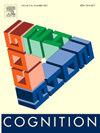幼儿时期概率推理的发展
IF 2.8
1区 心理学
Q1 PSYCHOLOGY, EXPERIMENTAL
引用次数: 0
摘要
以前的研究结果在儿童能够根据比例计算概率的年龄方面一直不一致,估计范围从1岁到12岁。我们研究的目的是双重的:(I)解决之前的不一致,(II)量化3- 5岁儿童的推理技能,使用一个简单而引人入胜的实验程序,但也允许控制可能的竞争启发式策略,这可能导致模仿正确答案的结果。具体来说,孩子们必须在两个装有不同比例的蓝色和黄色球的瓮中做出选择。他们知道,如果在几次随机混合后,一个目标(例如,一个蓝色的)球从选定的瓮中掉出来,他们就会得到奖励。如果孩子们理解概率,他们应该选择有更高比例的目标球的瓮。在18个试验中,通过操纵两个回合中目标球与非目标球的绝对和相对数量来解开备选推理策略的纠缠。我们发现,大多数5岁的孩子和少数但不可忽略的年龄更小的孩子一致选择了目标物品比例更高的骨灰盒。然而,很大一部分3岁和4岁的孩子的反应似乎是由启发式策略引导的,最普遍的是选择有更多目标球的骨灰盒。这些结果为幼儿概率推理的发展提供了更全面的理解,并强调了在控制竞争策略的同时使用实验程序和刺激来提高推理能力的重要性。本文章由计算机程序翻译,如有差异,请以英文原文为准。
The development of probabilistic reasoning during early childhood
Previous results have been inconsistent regarding the age at which children can compute probabilities based on proportions, with estimates ranging from one to 12 years. The aim of our study was twofold: (I) to address previous inconsistencies and (II) to quantify reasoning skills in 3- to 5-year-old children using an experimental procedure that is simple and engaging but also allows for the control of possible competing heuristic strategies, which may lead to outcomes mimicking the correct answer. Specifically, children had to choose between two urns containing varying proportions of blue and yellow balls. They knew they would receive a reward if, after several random mixtures, a target (e.g., a blue) ball fell out of the chosen urn. If children understood probabilities, they should select the urn with a higher proportion of target balls. Alternative reasoning strategies were disentangled by manipulating the absolute and relative numbers of target versus non-target balls in the two urns across 18 trials. We found that most 5-year-olds and a smaller but non-negligible number of younger children consistently chose the urn with a higher proportion of target items. However, a significant portion of 3- and 4-year-olds’ responses appeared to be guided by heuristic strategies, with the most prevalent being choosing the urn with a higher number of target balls. These results provide a more comprehensive understanding of the development of probabilistic reasoning in young children and underscore the importance of using experimental procedures and stimuli that enhance reasoning abilities while controlling for competing strategies.
求助全文
通过发布文献求助,成功后即可免费获取论文全文。
去求助
来源期刊

Cognition
PSYCHOLOGY, EXPERIMENTAL-
CiteScore
6.40
自引率
5.90%
发文量
283
期刊介绍:
Cognition is an international journal that publishes theoretical and experimental papers on the study of the mind. It covers a wide variety of subjects concerning all the different aspects of cognition, ranging from biological and experimental studies to formal analysis. Contributions from the fields of psychology, neuroscience, linguistics, computer science, mathematics, ethology and philosophy are welcome in this journal provided that they have some bearing on the functioning of the mind. In addition, the journal serves as a forum for discussion of social and political aspects of cognitive science.
 求助内容:
求助内容: 应助结果提醒方式:
应助结果提醒方式:


